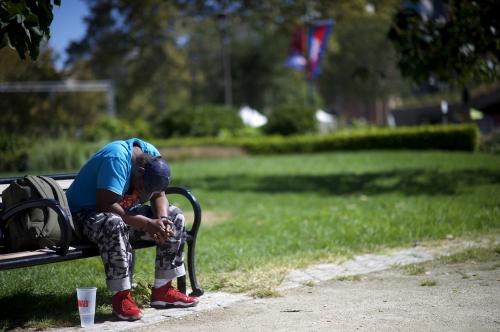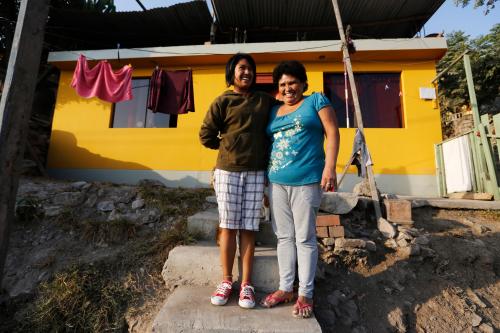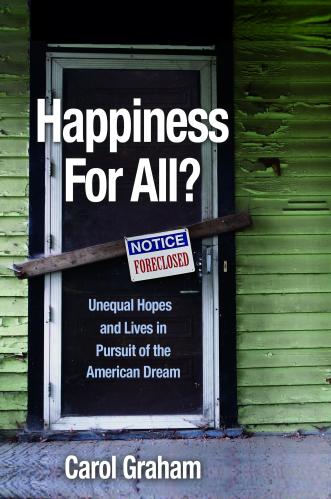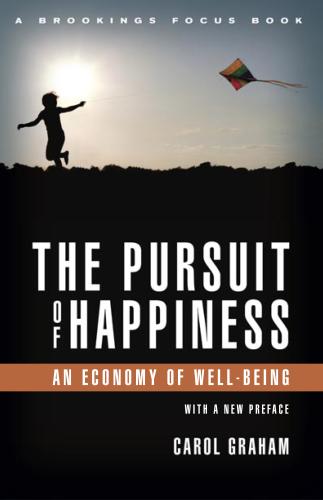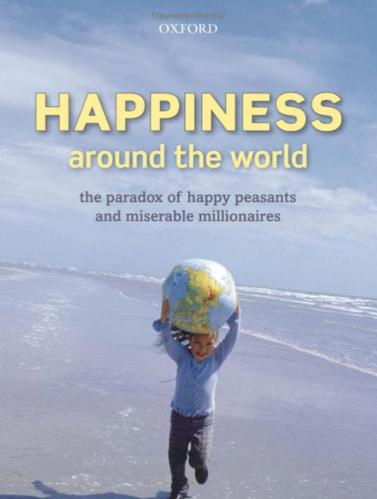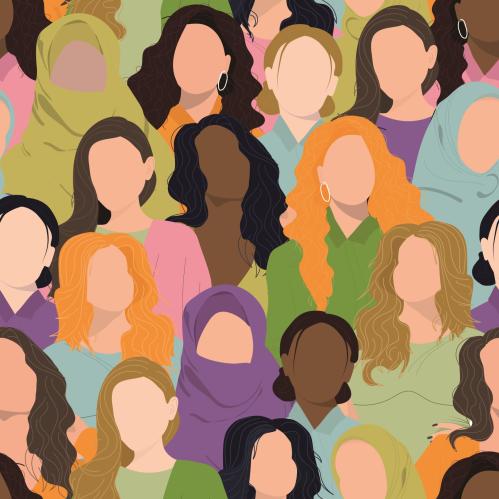A little understood question is the extent to which optimism and aspirations actually matter to future outcomes. It seems intuitive that hope and optimism for the future provide incentives for individuals to invest in those futures. Yet it is also plausible that optimists could mis-predict, and therefore fail to invest in insurance against negative shocks, and then suffer worse future outcomes.
Several studies in the literature on the economics of well-being support the first hypothesis. In some very early work on this topic, one of us (Graham, Eggers, and Sukhtankar 2004) found that higher levels of residual happiness—e.g., the happiness of each individual that was not explained by observable socioeconomic and demographic traits—in an initial period was correlated with higher levels of income and better health in future periods.1 Since then, several studies using a range of metrics, from twin and sibling comparisons to lab experiments, have confirmed such a channel, finding again that happy people have better outcomes in a range of areas from the health to the labor market to the social arena.2
Some more recent experimental studies, which are based on simple interventions that evoke optimism, find significant changes in behavior. One such study is based on the provision of simple assets—such as a cow or other livestock—to poor people in developing countries, and find it results in increased labor and other investments. Another asked respondents in U.S. soup kitchens to recall a time they felt positive about themselves, which in turn resulted in more effort in playing simple games compared to those who did not receive the optimism prompt.3 The driving channel in both these cases—as well as in other experiments—seems to be the provision of new hope. On the one hand, while these studies cannot reveal how long the behavioral changes last, they are, at the very least suggestive of a virtuous circle.
On the other hand, there is some evidence that individuals mis-predict what will make them better off in the future.4 A recent study based on panel data for Germany finds that most individuals mis-predict the positive effects of life events such as marriage and the negative effects of others such as divorce, unemployment, and disability (Odermatt and Stutzer, n.d.). Another study based on the same German panel finds that younger people over-predict their future life satisfaction, while older people under-predict it, but have higher levels of current reported life satisfaction (Schwandt 2016). The direction of these findings complements the wider body of work that has been done on the U-curve relationship between age and happiness, which finds a consistent cross-country relationship, with the low point in happiness being in the middle-aged years (in part as individuals adjust their aspirations as they age), and then current life satisfaction increasing as people age, as long as they are healthy for their age (Blanchflower and Oswald 2016; Graham and Ruiz Pozuelo 2017).5
In some recent work on the U.S., meanwhile, one of us (Graham with Sergio Pinto 2018) finds that lack of hope and high levels of stress and worry among less than high school educated whites are linked to the higher rates of premature mortality, or deaths of despair as identified by (Case and Deaton 2015, 2017).6 In contrast, poor African Americans and Hispanics have much higher levels of optimism, and have not displayed the same increase in mortality that afflicted non-white Hispanics beginning in the late 1990s; indeed the life expectancies of African Americans and Hispanics have continued to increase during this period and are catching up with those of whites in general. In contrast to current life satisfaction, which typically increases in age, as discussed above, optimism about the future tends to decrease with age (which for most respondents is a realistic assessment). While older whites display the typical decrease in optimism that is shared by older respondents in many European countries, African Americans depart from that trend and maintain higher levels of optimism as they age (Graham and Pinto, 2018).
One explanation, among many, for the increase in the despair of less than college educated whites is the decline of their primary identity—as productive blue collar workers—on the one hand, and the associated loss of ties to society and community that accompanied the decline of manufacturing and other blue collar jobs. The starkest manifestation of this is the rise in the increase of prime age workers, and particularly males, out of the labor force. Time use studies of this group show large increases in time spent on video games which, in turn, is an additional disconnect from society (Krueger 2017). The loss of close ties to society, meanwhile, as in the case of the long-term unemployed, is associated with deep unhappiness and even despair (Clark and Oswald 1994; Pecchenino 2015).
In this paper, we explore the proposition that more optimistic people live longer and first explore that by looking at the differential optimism of household heads in the period 1968-1975 and their probability of being alive in 2015. We posit that, in addition to innate character traits, optimism depends on demographic and socio-economic characteristics, as well as parental traits. It is important to note that we use optimism and hope as inter-changeable concepts, with each of these combining a positive belief that good rather than bad things will happen, as well as the ability to plan for and work toward goals, the latter requiring a certain level of agency. Psychologists make finer distinctions between these concepts; in terms of our objectives and data, the two go hand in hand.7
We also predict long-term trends in optimism using a model estimated using historical optimism. The trends reveal forces affecting the country before increasing mortality was identified in the late 1990s. Moreover, the trends affecting people with less than a high school level of education are present whether or not we follow the same people over time. This finding illustrates one of the strengths of our study. Most studies are unable to follow the same people over time and recognize this as a limitation. For example, the underlying characteristics of high school dropouts in 1972 are unlike those in 2016 (as an increasing percentage of students completed high school over the time period).8
-
Footnotes
- The study was based on based on panel data for Russia. We regressed happiness on the usual control variables in t-0 and then calculated a residual or unexplained happiness for each respondent, which was then used as an independent variable in t-1. See Graham et al., (2004).
- See, De Neve et al., (2013), De Neve and Oswald, (2012), and O’Connor, (2017), and for an overview, Graham (2017).
- See Haushofer and Fehr (2014) and Hall et al., (2014)
- See Kahneman and Thaler (2006) and Frey and Stutzer (2014)
- These studies control for the primary confounding factors such as income and health and therefore the “pure” effect of aging, with everything else held constant. Other studies alternatively look at aging without these controls, evaluating so-called “experienced” well-being, in which case the U holds in fewer countries and usually in richer rather than poorer ones. Moreover, in a study critiquing aspects of the U-shape, one of us still finds similar evidence. Average experienced life satisfaction (over 17 countries) declines from approximately age 30, until about age 50, then increases again until about age 75 (Morgan and O’Connor 2017). For an excellent review of the psychological as well as economic studies, see (Rauch 2018).
- Case and Deaton’s second paper (2017), meanwhile, suggests that the trends underlying this despair may have started as early as the 1970’s, something that our findings (below), corroborate.
- See, for example, Bailey et al. (2007). In some related new survey work, one of us (Graham), with Ruiz-Pozuelo, we also test whether the agency component of these two concepts is associated with surmounting negative events, which in turn builds resilience (Graham and Ruiz Pozuelo 2018).
- See Blanchflower and Oswald (2018, 15) as an example study that recognizes this limitation in part of their analysis.



